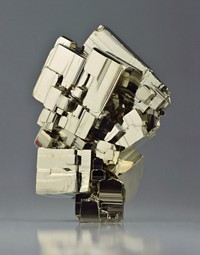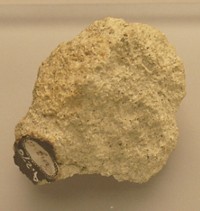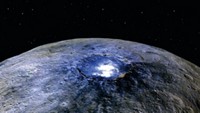Advertisement
Grab your lab coat. Let's get started
Welcome!
Welcome!
Create an account below to get 6 C&EN articles per month, receive newsletters and more - all free.
It seems this is your first time logging in online. Please enter the following information to continue.
As an ACS member you automatically get access to this site. All we need is few more details to create your reading experience.
Not you? Sign in with a different account.
Not you? Sign in with a different account.
ERROR 1
ERROR 1
ERROR 2
ERROR 2
ERROR 2
ERROR 2
ERROR 2
Password and Confirm password must match.
If you have an ACS member number, please enter it here so we can link this account to your membership. (optional)
ERROR 2
ACS values your privacy. By submitting your information, you are gaining access to C&EN and subscribing to our weekly newsletter. We use the information you provide to make your reading experience better, and we will never sell your data to third party members.
Physical Chemistry
Earliest Diamonds Stir Up Debate
Gems in zircon grains may revise notions of early Earth events
by Elizabeth K. Wilson
August 27, 2007
| A version of this story appeared in
Volume 85, Issue 35

A DISCOVERY of tiny diamonds embedded in the most ancient known minerals adds a new twist to the ongoing debate over at what point, billions of years ago, the molten, nascent Earth began to cool and crust over.
Relic grains of hardy zircon previously found in the Jack Hills of Western Australia are believed to be up to 4.4 billion years old—hardly younger than the 4.5 billion-year-old Earth itself. Their various well-studied properties are taken as evidence that a crust of cooler rock was forming and plate tectonics were at work earlier than thought in previous decades.
The latest discovery—diamonds within zircon grains up to 4.25 billion years old—could either give weight to, or detract from, the cool-old-Earth theory. The diamonds were discovered by Thorsten Geisler, researcher at the Institute of Mineralogy at Westfälische Wilhelms Universität, Münster, Germany; graduate student Martina Menneken; and colleagues in Australia. The researchers report their findings in Nature (2007, 448, 917).
Raman spectroscopy indicates that the diamonds' characteristics are similar to those of diamonds formed under ultra-high pressures, Geisler tells C&EN.
That complicates things. As Ian S. Williams, an earth sciences researcher at Australian National University, in Canberra, points out in a commentary accompanying the report, that finding would seem to indicate that the diamonds weren't produced in relatively low-temperature molten rock.
Perhaps, a high-pressure event produced the diamonds, which were then recycled into younger material. Or perhaps the diamonds were created during the convection processes of Earth's early mantle.
"Like the authors, I'm not sure what to make of it," notes Harry Green, geology and geophysics professor at the University of California, Riverside. Whatever the mechanism, "the data appear to be solid," he says.
Geisler's group has plans for further study, including analyses of the isotopic composition of the diamonds' carbon.
"Any information about the very early Earth is fantastic," Martin Van Kranendonk at Geological Survey of Western Australia says in a statement. "It's like a Christmas present for geoscientists."





Join the conversation
Contact the reporter
Submit a Letter to the Editor for publication
Engage with us on Twitter